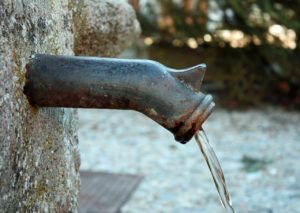The Coming Drought
 You may have noticed the “D” word in the news these days, especially here in California. Governor Brown has declared a Drought Emergency. Strange, considering that the majority of the US is blanketed in a second Ice Age. Periods of drought are not uncommon in California. They are cyclical patterns in our ecosystem, and we will have them again. Should we be concerned? Drought or no, we all need to be good stewards of our water use, and our common sense will go a long way. But our water consumption continues to rise and for those who haven’t thought this through, now is the time.
You may have noticed the “D” word in the news these days, especially here in California. Governor Brown has declared a Drought Emergency. Strange, considering that the majority of the US is blanketed in a second Ice Age. Periods of drought are not uncommon in California. They are cyclical patterns in our ecosystem, and we will have them again. Should we be concerned? Drought or no, we all need to be good stewards of our water use, and our common sense will go a long way. But our water consumption continues to rise and for those who haven’t thought this through, now is the time.
Many areas of California have already begun voluntary water conservation. However, we may very well be heading toward mandatory conservation as soon as this summer.
What does this mean, and what can we do? While many have already made some changes, but as far as your landscape is concerned, some simple, initial steps can be taken to help conserve our water supplies. This can include a survey of your irrigation system. You can do this yourself, or you can solicit the help of a professional irrigation auditor. This survey will look for missing sprinkler heads, broken nozzles, valves stuck open, breaks in the piping, etc. and make those repairs.
Next is to look at how often your system activates and begin to slowly back off on the run time. We tend to overwater our plants, especially our lawns, and they can survive quite nicely with less. During this process you will need to keep an eye on your landscape, but an initial reduction of 20% can be achieved with relative ease. A more gradual reduction toward 30% – 40% can also be accomplished and still maintain a healthy landscape.
Updating equipment, including new valves and even a new controller can also help. The weather-based controllers can be very effective by using historical weather data, or weather station information, to automatically update your program every day. However, these controllers are not a solution by themselves. It will take a combination of efforts for the most success. This can include removing the old pop up spray heads and retrofitting to either more efficient rotors or to a drip application. Using rain sensors when the rain does return is also a simple and effective method for saving water when we have it.
Finally, more aggressive steps can include reducing or eliminating lawn areas, especially lawns on slopes, in narrow areas (under 8’) and shady zones. Replacing these areas with water conserving plants, dry creeks and mulch is a very effective solution. A landscape architect or designer can help work through various ideas with you to create an attractive landscape that meets your needs and goals.
Good sources for information include your local water supplier. They have references and photos for water conserving plants, retrofitting your irrigation system, and free water audit programs, as well as rebate programs for changing out your lawn or irrigation equipment.
With just a little effort we can all do our part in saving this precious resource.
